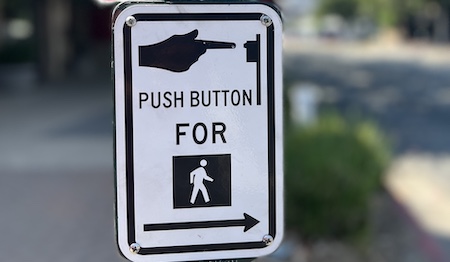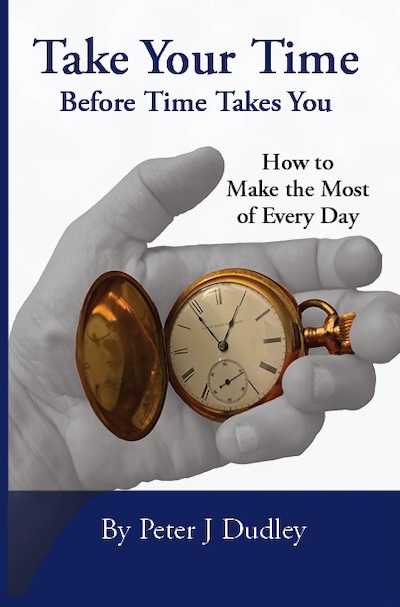Gamify your life for behavior change
It’s okay to gamify your life to make behavior change. I’m writing about this today because it came up with three separate clients last week, in different ways.
There’s this weird sense people have that if they use games, incentives, or gimmicky-feeling techniques to change their own behavior, they’re somehow cheating. If you want to change your behavior, shouldn’t you just want it more? Be more disciplined? Declare even harder that this time you’ll really do it?
If you can’t will the change into existence, will it even be real?
And yet we use incentives and punishments all the time to get the behaviors we want from others. Parents do it with kids. Bosses do it with their teams. Companies do it with customers. Any loyalty program where you accrue points for shopping is an example of gamification.

And, many of us do this naturally with behaviors we are actually ready and eager to embody. The week after Halloween is a perfect illustration, as we all find ways to avoid eating the leftover candy right now.
(We’ve put ours in a box in the garage and allow ourselves to bring in only one item at a time.)
But when it comes to changing ourselves, we scoff at incentives and punishments, games and gimmicks. I think that’s because we don’t trust that such games and gimmicks will have a lasting effect.
But they can, and they do. The point of gamification is to develop a routine which can then be grown into a habit, and ultimately into an unconscious way of life.
Six tools to gamify your life
As we go into the period of the year when we beat ourselves up for failing at last year’s New Year’s Resolutions, and resolve even harder to do it really this year for real no really I mean it this is the year I promise for real no honestly, I thought I’d offer up some simple and common gamification techniques that might help where just declaring the intention has failed in the past.
Your mileage may vary, of course, and if you find you’re still resistant to the changes you intend to make, then I suggest there might be something deeper that’s keeping you in your current habits. (We should probably talk about that.)
1: Reward token
Create a system where every time you positively achieve the thing you’re aiming for, you add a “reward token” to a repository. This could be a coin in a piggy bank, or a bead in a jar. Then, either at a set time in the future or when you’ve accumulated enough tokens, you get to cash them in with yourself for a pre-determined reward.
A simple example: If your intention is to keep in touch with friends more often, you might get two small bowls and 10 dimes. Start with all the dimes in one bowl, and every time you complete a qualifying connection, move one dime into the other bowl. When you’ve moved all the dimes, you get to reward yourself with something relevant and appropriate for the achievement. Or, at the end of a specified period (e.g, a month), you get to reward yourself according to the number of dimes you moved. Either way, you then start over.
The reward has to feel both achievable and non-trivial so it provides proper incentive, and you have to be able to track your progress in order to keep the incentive feeling fresh. Watch out for negotiating yourself down (“I texted Wilma back, so I’ll count that this time”) and moving the goalposts.
2: Instant punishment
When the reward and punishment inherent in the desired behavior are not enough to incentivize you to change, you may need to amp it up a bit.
Procrastination is one example—people who procrastinate already know that getting the work done early will reduce their stress and increase the quality of their work, and they already know that waiting til the last moment increases risk and invites failure. Those rewards and punishments are not enough to change the procrastination behavior, though, even when you desperately say over and over that you want to fix it.
In situations like this, adding a new punishment that feels more immediate and tangible can be an effective game. The classic example of an instant punishment is the swear jar, where anyone who swears has to put a dollar in the jar. At some point in the future, the money is used for something good, but the instant discomfort of the punishment might spur changes toward the desired behavior.
Personally, I prefer incentive-based techniques, but it is generally accepted that the fear of loss is a stronger motivator than the desire for gain, so if the instant punishment feels like a loss, then that may be motivation enough to inspire the behavior you’re looking for.
3: Time-based challenge
If what you need is a kick-start that you hope might turn into either a new habit or at least a lasting nudge in the right direction, creating a time-based challenge might be your best bet.
I’ve engaged in two such challenges that have made lasting lifestyle change for me. One was a 30-day plank challenge during the pandemic. I managed to make that go about 90 days before falling off, but it resulted in a whole new set of exercise opportunities for me to work into my regular routines. This was incredibly useful when I was adjusting to my new reality of a ruptured ACL and the resulting inability to play soccer.
The other was NaNoWriMo, or National Novel Writing Month. This is a challenge to write 50,000 words on a single story in the month of November. While completing the challenge did not turn into a daily habit, it did prove that I could indeed write an entire novel. Before NaNoWriMo, I had started and abandoned dozens of novels but never completed one. Since NaNoWriMo, I have completed eleven. The game broke my pattern and allowed me to find new patterns.
The risk with a challenge like this is setting your sights too high at the outset. The challenge must be achievable, but it also has to be a bit of a stretch.
4: Shared accountability
I have found that people stick to these gimmicks and games longer and more faithfully if they know someone else is paying attention. (As for “paying attention,” think cheerleader, not vice principal.)
We all have many points of shared accountability in our daily lives, but we don’t think of them as such because we think of those things as normal activities, not attempts at behavior change. Exercise classes are a great example—I know quite a few people who never exercise on their own but who love going to a class. Writing groups help writers keep going in what is a very isolated activity. Everything from job searches to pursuing sobriety can be more successful when you’ve got a cheerleader, and someone to cheer for. That is shared accountability.
You don’t want to let it turn into an unhealthy competition, though. Group settings can have the risk of getting unbalanced, with some people succeeding more and others succeeding less. This can be demotivating for both types of people when that happens.
5: Visual tracker
My fifth grade teacher put up a chart on the wall, and every time a student read a Newbery Medal book or they wrote their own mini book, they got a gold star by their name. At the end of the year, if you had the minimum number of gold stars, you were invited to an ice cream party. (Everyone got to come to the party… Mrs. Waldo was not a monster.)
I am a big fan of visual trackers. My wall calendar shows how many days I have until my next deadline, and I tick off each day that passes. In fundraising, nonprofits often use a thermometer to show how much has been raised so far. It feels good to watch the tracker advance toward the goal, and that good feeling alone is often enough to motivate more of what you’re trying to achieve.
Visual trackers are great because they not only show you at a glance how you’re doing against your goal, but they can also expose streaks. Anyone who’s ever played Wordle knows how powerful that “keep the streak going” feeling is.

The risk with visual trackers is that if you’re not doing very well or have a string of misses, it could invite self-judgment instead of self-motivation. That said, I’m still a fan because the visual tracker does not judge; it exposes what’s really happening. If you then change what’s really happening, the tracker will reflect that.
6: Touchstone
Ted Lasso put a sign above his office door saying BELIEVE. He wanted to change a mindset, and that sign was one constant, always-visible reminder of that intention. You can do a similar thing.
I had one client who got feedback that she was bristly and distant in online meetings, though in person people found her the opposite. A fan of cartoons, she decided to put a figurine of Bugs Bunny and another of the Tasmanian Devil on top of her computer monitor, to remind her to be more like Bugs and less like Taz in online meetings.
Whatever you use as a touchstone, remember that its magical power comes from within you. If you haven’t sufficiently associated it with a powerful enough motivating feeling, it probably will become just another invisible part of the scenery.
A touchstone can help you re-focus your inherent motivation on your goal, but it cannot substitute for your own inherent motivation.

Connect with me
Schedule a consultation session now or drop me a line.

With Take Your Time Before Time Takes You, learn to make the most of every day through thought-provoking exercises and perspective-twisting stories. Get it now in paperback or ebook.
“It changed my life.” – TP, client
“A go-to guide for people who want to improve their lives but don’t know where to start.” – MJ, earlier reviewer

RELIT: How to Rekindle Yourself in the Darkness of Compassion Fatigue gives practical, actionable advice on avoiding and overcoming compassion fatigue and caregiver burnout. My chapter explains how I stay centered and focused so I can give every client my best, every time.
Download my chapter for free: Show up. Try hard. Be nice.
Or just go buy the whole book. It’s worth it.


